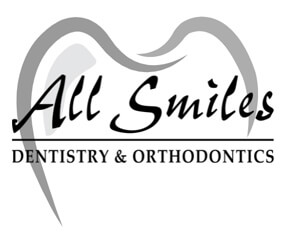
Sept 29, 2025
Are you experiencing a sharp pain in one tooth for the last few days, while biting into your favourite snack? Moreover, you noticed a dark cavity spot that wasn’t there before. Maybe a tooth feels sensitive to hot coffee or cold ice cream. Suddenly, a small problem has now become impossible to ignore. At this point, many people wonder: Do I need a simple filling, or is it time for a crown?
This is true that your teeth take a lot of work every day. From chewing to speaking, even minor damage can affect how they feel and function. Acting at the right moment can save your tooth from further damage, prevent discomfort, and keep your smile looking its best. Both fillings and crowns repair teeth, but each works in its own way, suited to different levels of damage.
Let’s take a look at both of the options!
We’ll start with the filling option first. So, fillings work best in case of small cavities or minor damage. Just imagine a tiny hole forming in a tooth. If it grows and is left unchecked, the tooth weakens and discomfort increases. A filling repairs the tooth by removing decay and filling the space with a material that blends naturally with your smile.
Signs a Filling May Be Needed
Fillings are quick and minimally invasive. Only the damaged part is removed, preserving most of the tooth. Modern dental fillings are tooth-colored, blending in so that your smile looks natural and intact.
Now it is time to discuss the time when it is necessary to have a crown on the teeth. You may well realize that there are more serious problems connected with some teeth. Crowns are usually required in large cavities, cracks, or teeth that have several fillings that have weakened them. The whole tooth is crowned, and it restores strength, shape, and functionality.
Signs a Crown May Be Needed
Crowns cover the tooth and prevent further damage, and also make chewing easier.. They also enhance beauty by repairing discoloured, misshapen, or chipped teeth. A crown makes you smile again and puts the comfort back in your smile.
The repair is usually dependent on the size of the damage. Small cavities tend to take a filling well. Molars that have to bear more pressure might require a crown to avoid cracking.
Longevity
The fillings are good for many years, though crowns are an added advantage to teeth that are heavily damaged.
Appearance
Both fillings and crowns can be identical to the natural teeth, though crowns do more than just look good; they correct angles and form, giving it a mild cosmetic enhancement as well as protection.
And, most importantly, one should not overlook even slight discomfort. The small holes may develop, and in some cases, a filling would have served in place of a crown. Cracks/worn areas deteriorate and rendering the treatment more complex.
This is why it is needed to be attentive to sensitivity, dark spots, or small chips. Timely treatment saves natural teeth and avoids the development of pain in the future.
Once a filling or crown is in place, care matters a lot. You need to brush and floss every day, not to bite very hard food, and visit a dentist regularly. In addition, inform about the emergence of discomfort or sensitivity to eliminate complications and extend restorations.
With proper care, fillings and crowns can protect teeth for years, keeping both function and appearance intact.
Filling: Best for small cavities or minor damage. Quick, minimally invasive, and effective.
Crown: Best for teeth that are cracked, weakened, or heavily decayed. Provides long-term protection and restores shape.
Small damage can often be repaired efficiently with a filling. Larger or weakened teeth benefit from a crown, which covers and strengthens the tooth fully. Acting early keeps teeth strong and reduces the risk of further problems.
We can agree to this: getting your teeth back on track has never been simpler. Small cavities can be fixed quickly with tooth fillings in Allen, TX, while larger or damaged teeth may need dental crowns in Allen, TX, to keep them strong. The right care now can stop discomfort before it starts and help you hold on to your natural teeth for years to come.
At All Smiles Dentistry, the team focuses on patients first, making sure every treatment fits your needs. Using modern equipment and careful techniques in a comfortable environment, they restore both how your teeth work and how they look. Don’t wait, because if you take care of small problems today, you can prevent bigger issues tomorrow. So, go and book your appointment and take the first step toward a healthy, confident smile.
If a filling cracks, leaks, or no longer supports the tooth, your dentist can replace it with a crown to restore strength.
Not always. A root canal is only needed if the tooth’s nerve is infected or damaged. Many crowns are placed without one.
Fillings usually cost less and are often covered more by insurance. Crowns cost more since they’re major restorations, but many insurance plans cover part of the cost.
Fillings last about 5–10 years, depending on care and bite pressure. Crowns usually last 10–15 years or longer with good oral hygiene.
Fillings and usually done in one visit; crowns often need two visits unless same-day crowns are available.

Dental Filling or Dental Crown: How to Decide What Your Tooth Needs





The Hidden Risks of Medical Tourism in Dentistry
| M | T | W | T | F | S | S |
|---|---|---|---|---|---|---|
| 1 | 2 | 3 | 4 | 5 | ||
| 6 | 7 | 8 | 9 | 10 | 11 | 12 |
| 13 | 14 | 15 | 16 | 17 | 18 | 19 |
| 20 | 21 | 22 | 23 | 24 | 25 | 26 |
| 27 | 28 | 29 | 30 | 31 | ||


